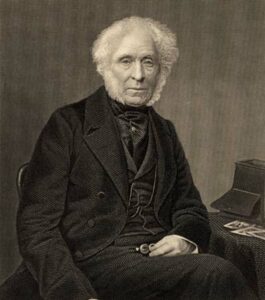Sir David Brewster

David Brewster (1781-1868) was principal of the United Colleges of St Salvador and St Leonard at the University of St Andrews from 1837-1859. Whilst here in 1849, he completed one of his most popularising achievements; the development of a more practical stereoscope than the existing model, enabling viewing of images in 3D. His contribution was the use of prisms to unite dissimilar pictures as one. Possibly the most significant impact of this was the improvement of the British lighthouse system at his persistence of his methods.
Education and Early Life
Born on the 11th of December 1781, Brewster studied Divinity from the age of 12 at the University of Edinburgh and went on to become a clergyman. Later he turned his full attention to his real passion: the study of optics and natural science.
The Stereoscope
In St Andrews, Brewster experimented eagerly to refine photographic techniques. Among others, he developed the “lenticular stereoscope”, which was more practical than that invented by Charles Wheatstone. Stereoscopes create the illusion of a 3D image, using understanding of the human ability to see two different perspectives with each eye. The fusion of these images is crucial for our spatial perception. Wheatstone constructed a system of two mirrors positioned in a certain angle to two (theoretically) identical drawings. Looking into the mirrors, an illusion would have resulted in the object to be visible in 3D. As it is almost impossible to create two identical drawings, reproducible photographs were soon used instead. The apparatus was also far too large. With his passion for optics, Brewster solved this problem. In his relatively small box, one could see through two lenses two identical photographs, illuminated via the glass bottom of the box. The lenses diverged the line of vision, so that both pictures were seen in full frame. This caused the illusion of a 3D image. Mass production of this invention started soon. Even Queen Victoria admired this item!
Impact on Photography
It was his merit that David Hill and Robert Adamson, later pioneers of early artistic photography, started their collaboration.
In 1843, a convention was held in Edinburgh which founded at the Free Church of Scotland. An enormous group portrait of the 457 persons present at that event was commissioned to the famous painter David Hill. Brewster namely promoted the inclusion of photography through the calotype process (paper coated with silver iodide was exposed to a camera flash creating light and dark impressions on the paper). To take those photographs, Hill started a collaboration with the young Robert Adamson. Later, they should become famous for their artistic photography.
